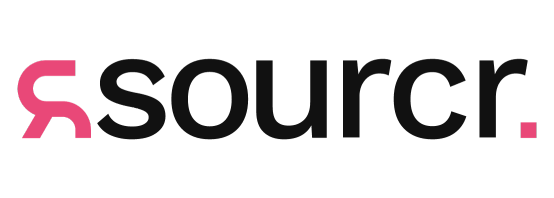Let's talk 02 8320 0683
The Pros and Cons of Temporary vs Permanent Work
When job hunting, the terms ‘permanent’, or ‘temporary’ appear often in job descriptions – but what do they mean in a real-world setting?
Deciding whether to apply for a permanent or temporary role is a critical choice in any job search. Each job type comes with a distinct set of traits that – depending on your circumstances – are either beneficial or not.
Before you start searching for a role, weighing up the pros and cons of temporary and permanent jobs will help you understand how a position will fit in with your circumstances, career goals and lifestyle preferences.
If you are searching for sales, marketing or business services jobs in Australia, our blog covers what you can expect from a temporary or permanent role.
Temporary Work
Temp jobs can last anywhere from a few hours to several months. They are a great way to gain experience in a variety of working environments and industries at a quicker pace compared to permanent jobs.
While many early-career professionals go for temporary roles, they can be beneficial for anyone regardless of experience level. The flexibility of temporary work makes it ideal for people who are raising a family or studying. Temping is also suitable for people who have just moved to a new city and want to keep their CV current, or those who are visiting Australia on a Working Holiday Visa.
The best way to find temp jobs in Australia is to get in touch with a recruitment agency, as they can connect you with multiple opportunities. Agencies usually hire temporary workers on behalf of employers, so they have ongoing relationships with candidates and regularly match them to new assignments.
Depending on the time of year and broader economic trends, companies may advertise more temporary jobs than permanent ones. Temp positions tend to get faster budget approval and help companies cover their interim staffing needs quickly.
Many temporary roles offer the possibility of transitioning into a more permanent position later, but it’s not a guarantee. When working as a temp, consider your entire work assignment as a trial with your employer.
The pros:
- Depending on the role and its grade, a temporary position can pay more per hour than a similar job that is permanent.
- Temporary roles are paid an hourly rate, which means you get paid for every hour you work and you get the possibility of a higher rate on weekends or public holidays.
- There is usually no requirement to give notice if you want to resign (although it is sensible to do so whenever you can).
- You can broaden your skills and professional network with a variety of employers.
- Temping is an excellent way to get your foot in the door at a reputable company.
The cons:
- Less financial stability – temp work can mean less predictable pay if you don’t have another role lined up after your current assignment.
- There is no guarantee an employer will extend a temp assignment or offer you a permanent position.
- Companies are not required to give you notice before ending your assignment.
- You do not get paid leave or holidays.
- Being unable to ‘settle’ into a role for more than a few months can make some people uncomfortable.
Permanent Work
Permanent jobs in Australia are still – to some extent – the ‘traditional’ job type for professional careers including sales and marketing. As the word ‘permanent’ suggests, this type of job is an ongoing engagement, with no set end date. When people talk about ‘9-5 jobs’, they’re usually referring to permanent work, although some permanent jobs can be part-time.
From recent graduates to mid-career professionals and senior managers, people from all walks of professional life can be found in permanent jobs. Perm jobs are the bedrock of many organisations and they help to build or maintain a company’s culture and performance.
Leadership positions, including Team Leaders and Executives, are more likely to be permanent positions. In marketing, it’s more common to be given project management responsibilities or management of external agencies if you are in a permanent role. In sales, a perm job gives you more scope to work with long-term business goals and accumulate more commissions.
To find permanent jobs in Australia, your best options include applying directly to employers using job sites and company career pages or signing up with a recruitment agency.
Many opportunities are not immediately advertised to the public, however, so connecting with your network or an agency can help you tap into positions that are not otherwise visible in online searches.
The pros:
- Job security and financial stability are two major drawcards of permanent work. With a predictable pay cycle (usually monthly or fortnightly) and regular hours each week, you can worry less about looking for the next assignment and make more long-term financial plans.
- Permanent jobs provide paid time off, so you will get paid public holidays, annual leave, parental leave and a set amount of sick leave each year.
- As a permanent employee, you may get access to perks that are not available for temporary roles, such as additional superannuation.
- You have opportunities to pursue a career path within the company, so you can work towards a promotion or even make a sideways move into another area that interests you.
- Employers can devote more resources towards your professional development, such as on-the-job training, coaching and more.
- Settling into a role for more than a few months allows you to build connections with your colleagues and clients. This can help you steadily grow your professional network and even make a few friends for life.
The cons:
- Depending on the seniority of the role, your pay on a per-hour basis could be lower than an equivalent temporary job.
- You may get bored with an unchanging routine – commuting to the same office, doing the same tasks, working with the same colleagues every day.
- You can get stuck in a rut if your position has no clear scope for career progression.
- Less flexibility around hours and schedules might negatively impact your work-life balance.
- Before you resign, you might have to give your employer anywhere between two weeks to more than a month’s notice.
- Although permanent jobs are perceived as more secure than temporary roles, there is a possibility your position is made redundant if the company restructures or faces financial difficulties.
Summary
With ample opportunities available for both temp and permanent jobs, it is crucial to consider what job type is best for you before you start applying.
When searching for sales, marketing or business services jobs in Australia, think about how a temp or perm role will suit your motivations, career ambitions and financial situation. You might have to weigh up the pros and cons for every role you apply for, so using this article can help you make decisions more quickly.
Are you a sales, marketing or business services professional looking for a temporary or permanent job? Do you need advice on how to make the most of your job search? As a leading recruitment agency in Sydney, WOW Recruitment connects talent to Australia’s most exciting employers. Get in touch with our team today for help in finding your next role.
















